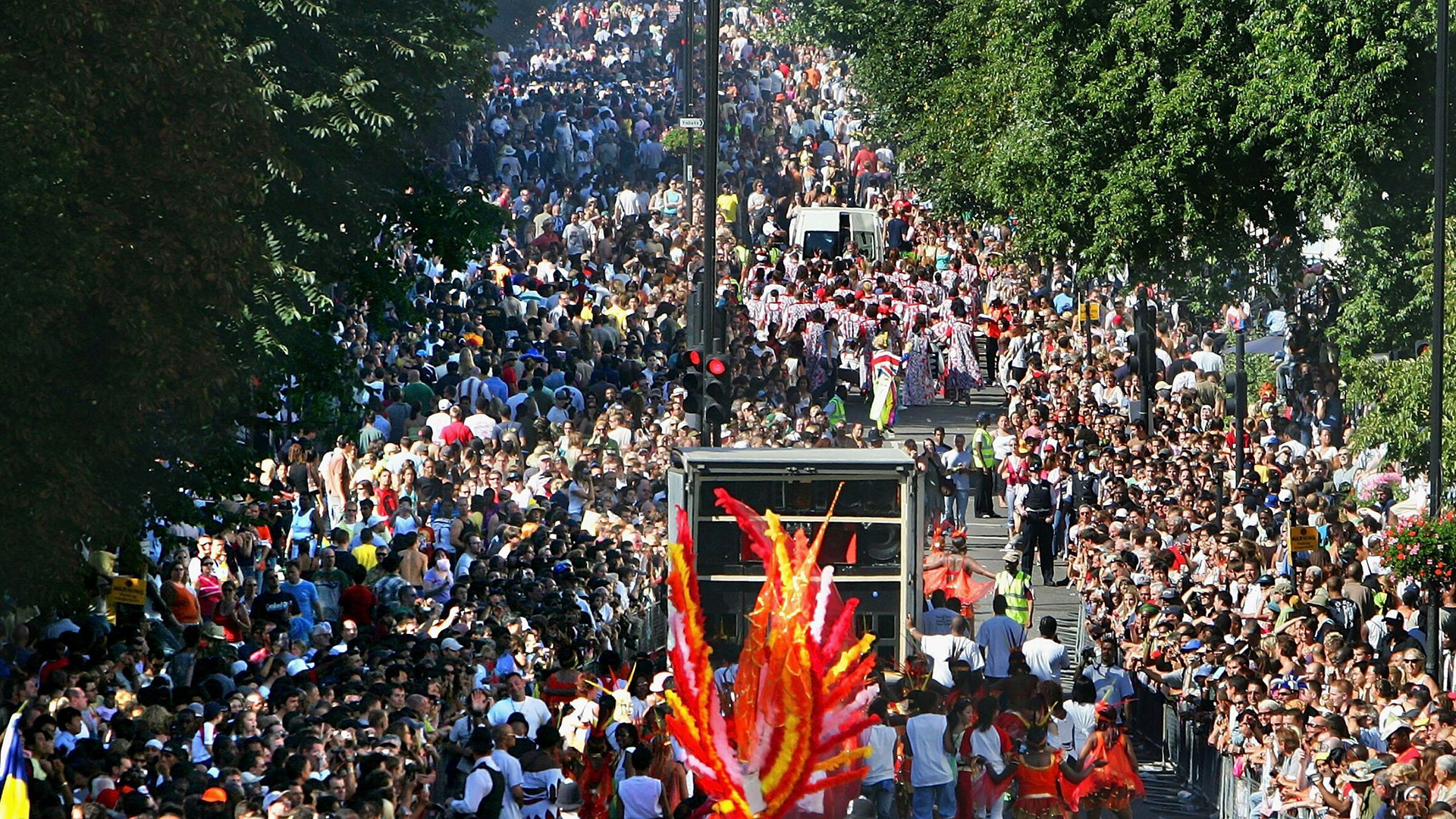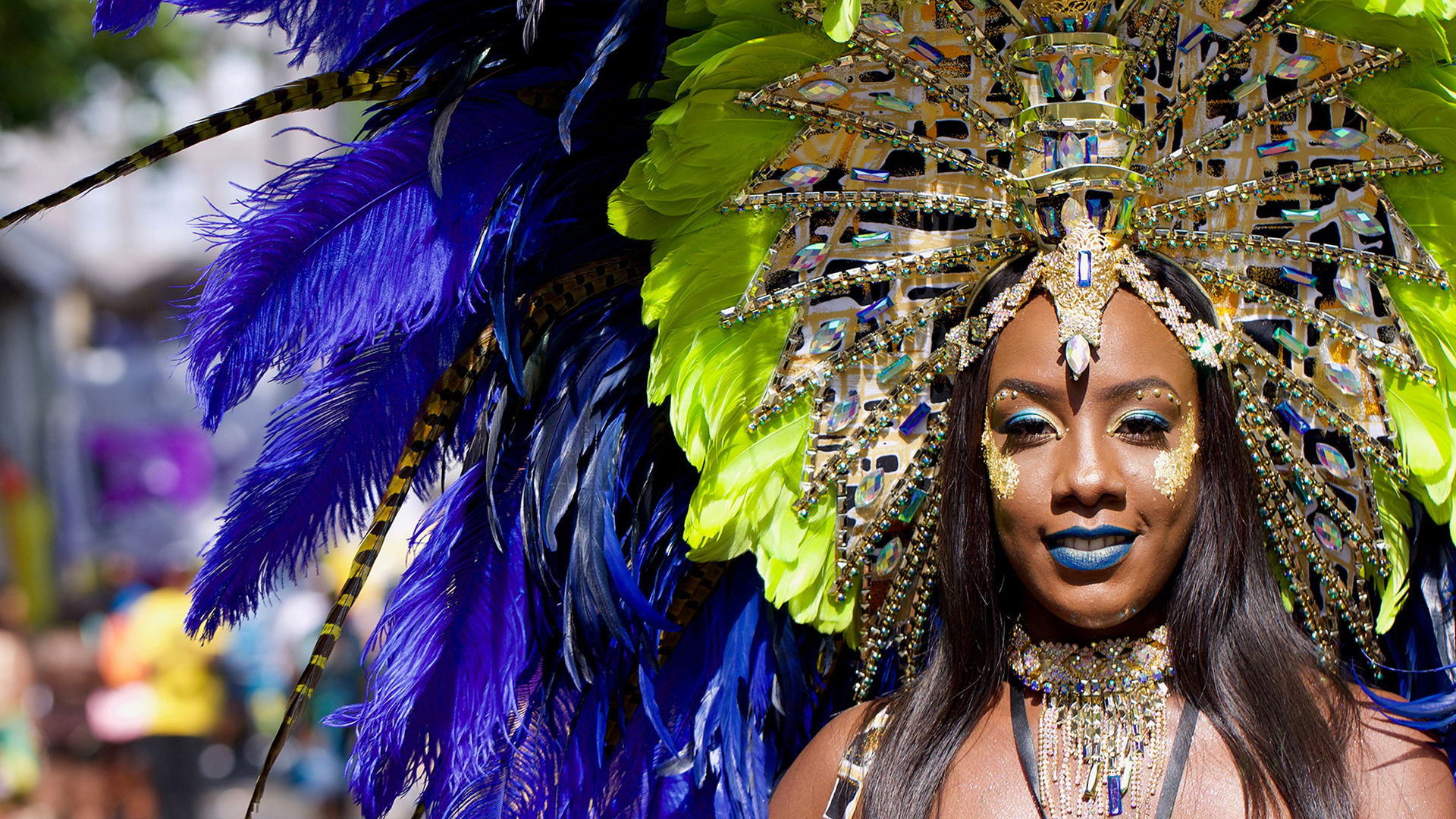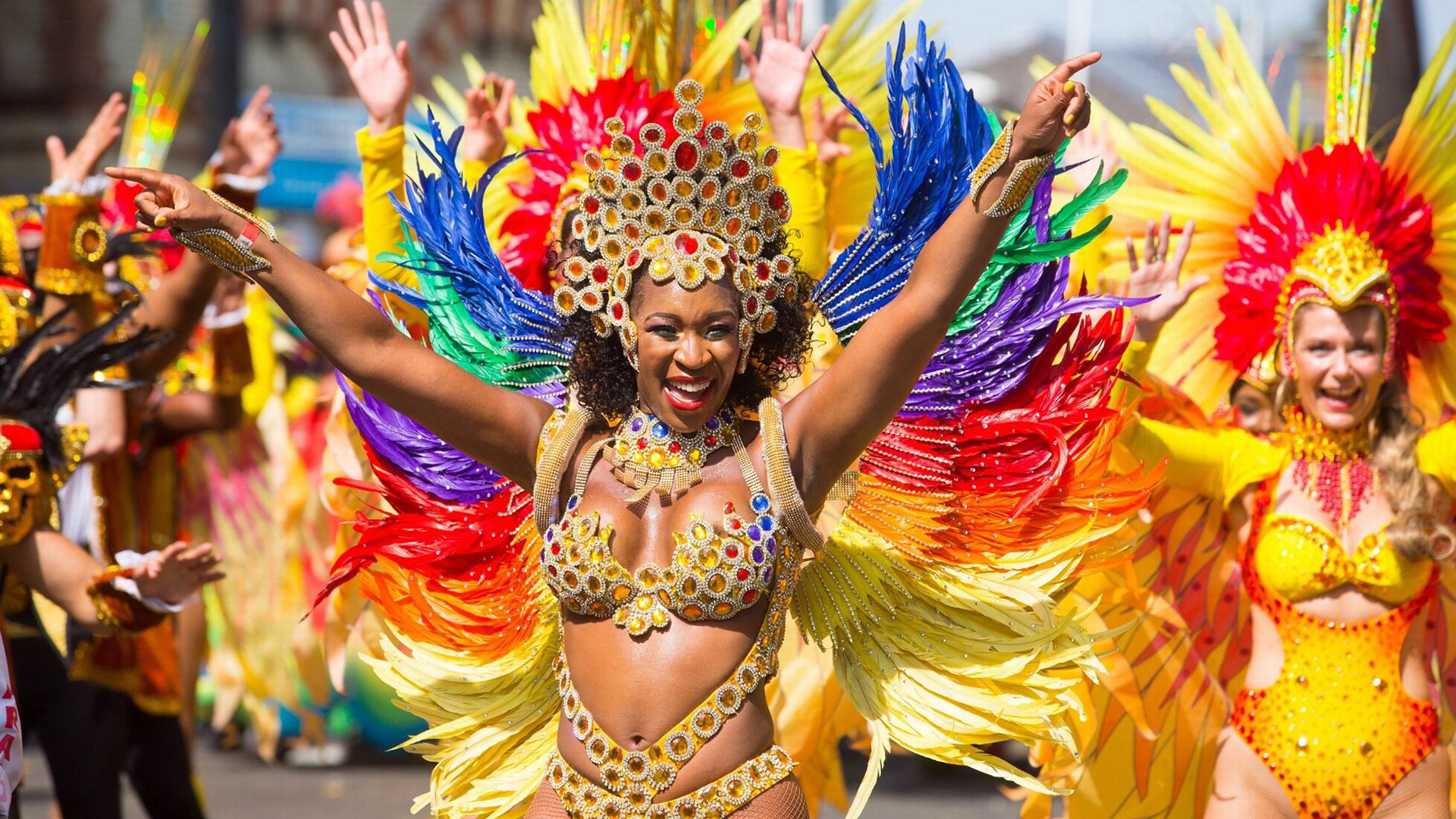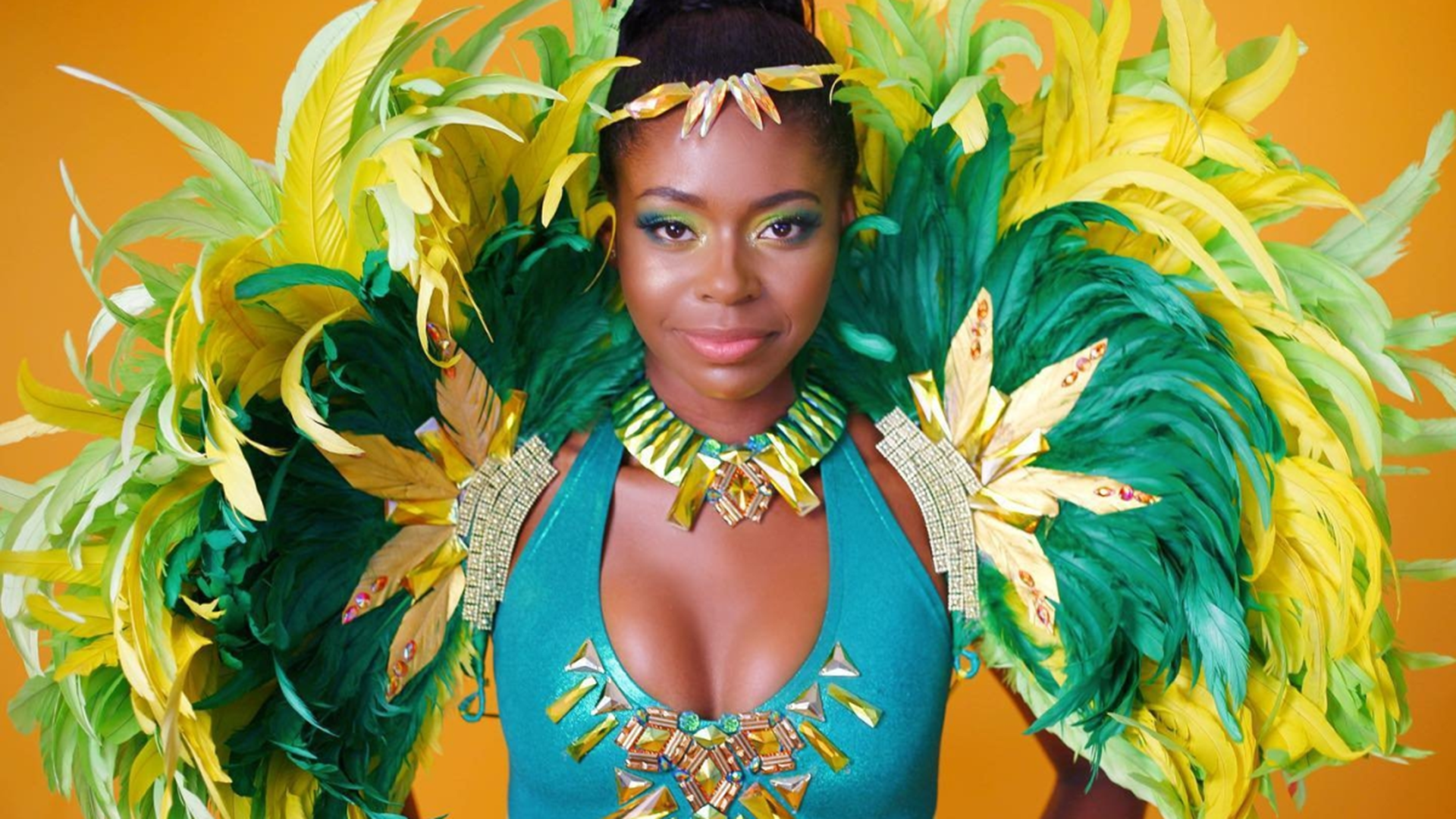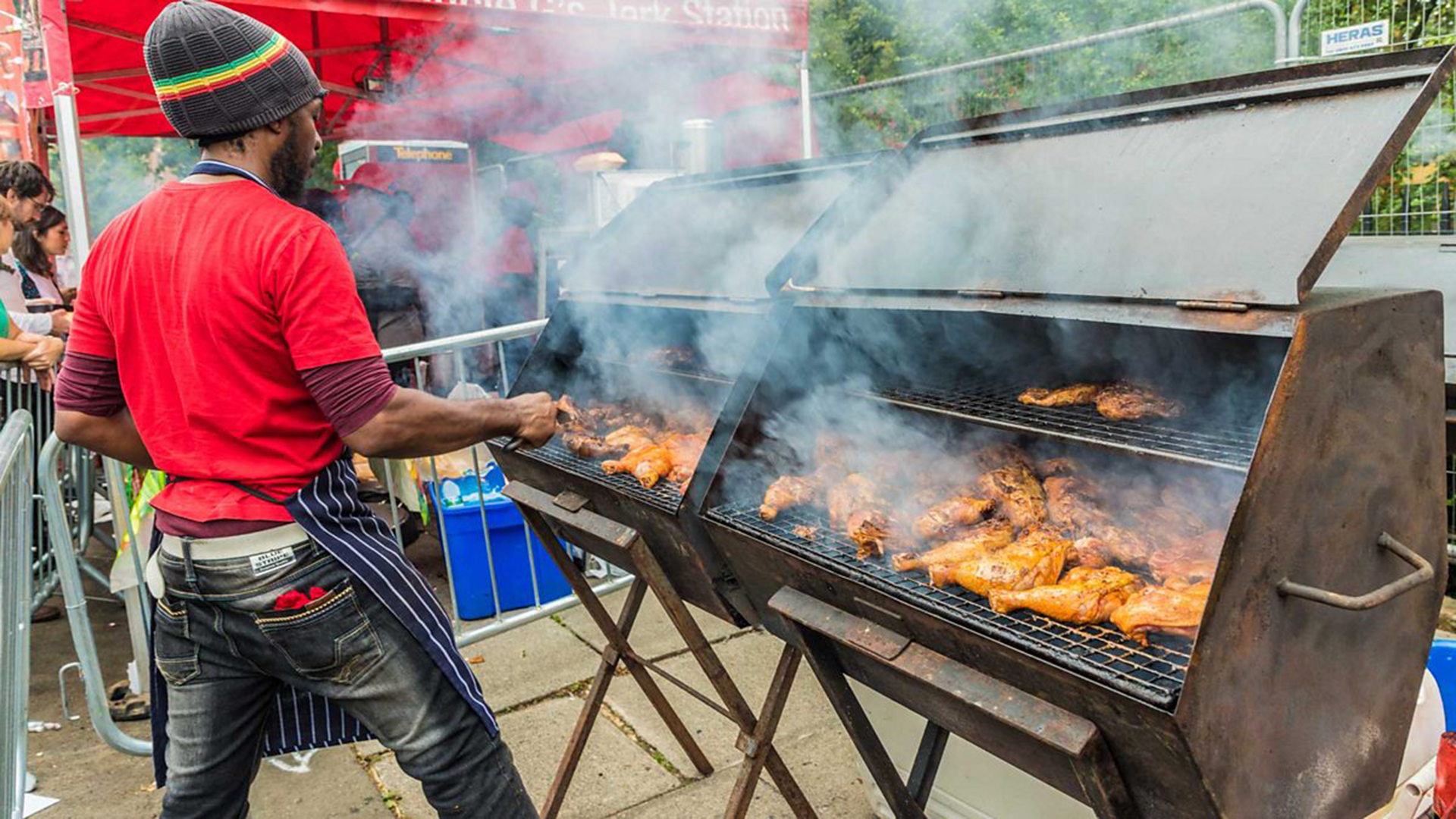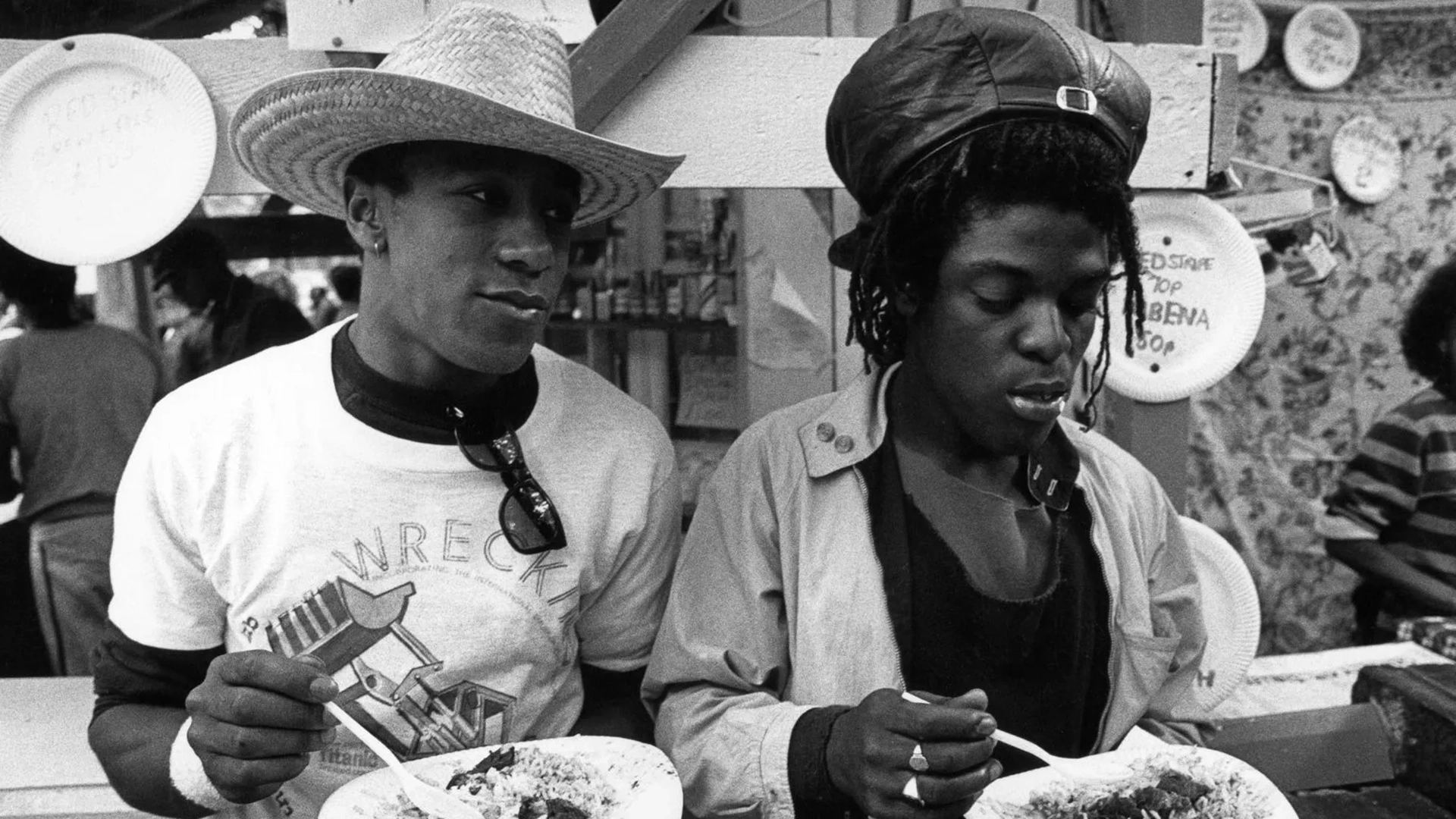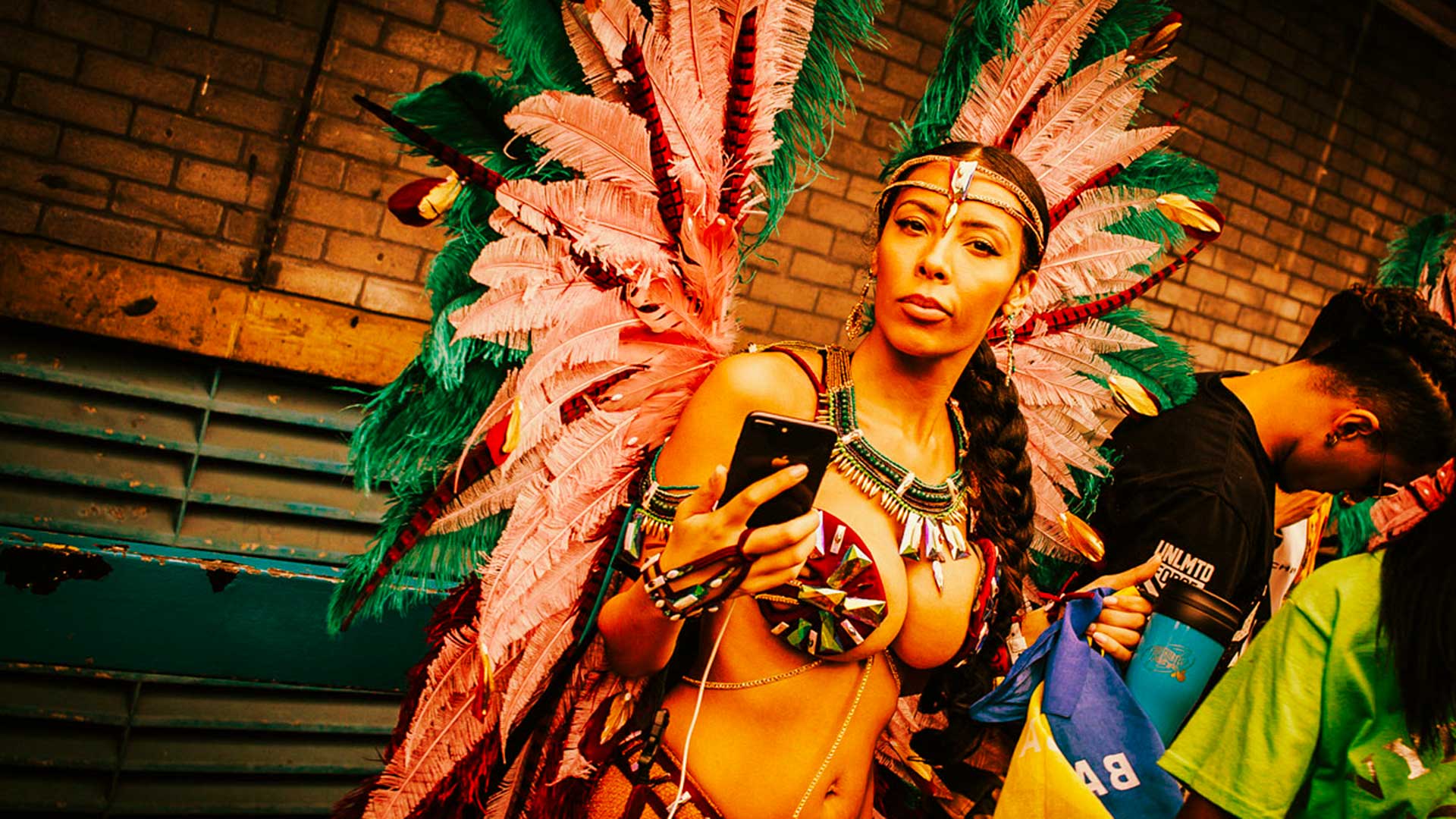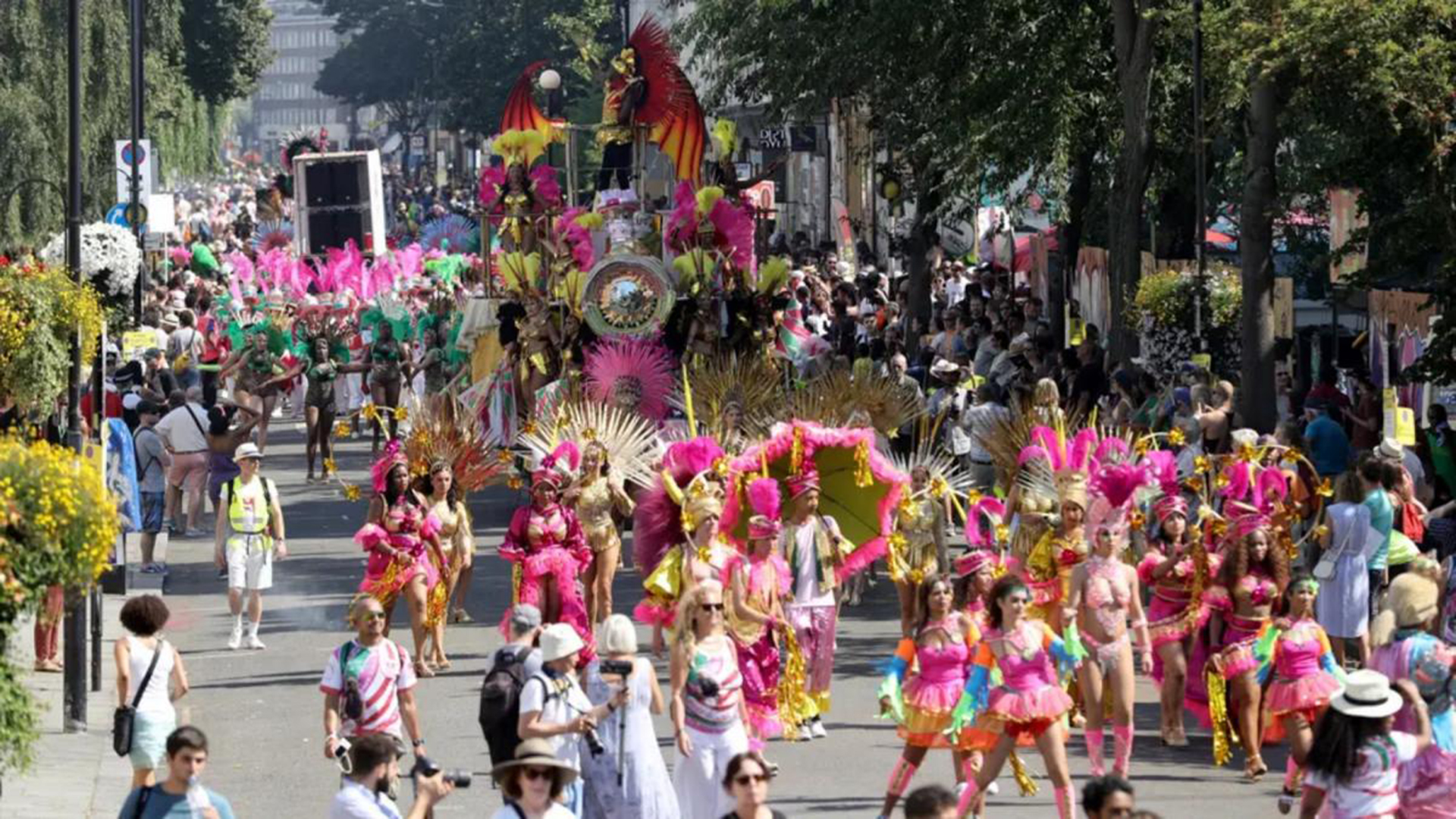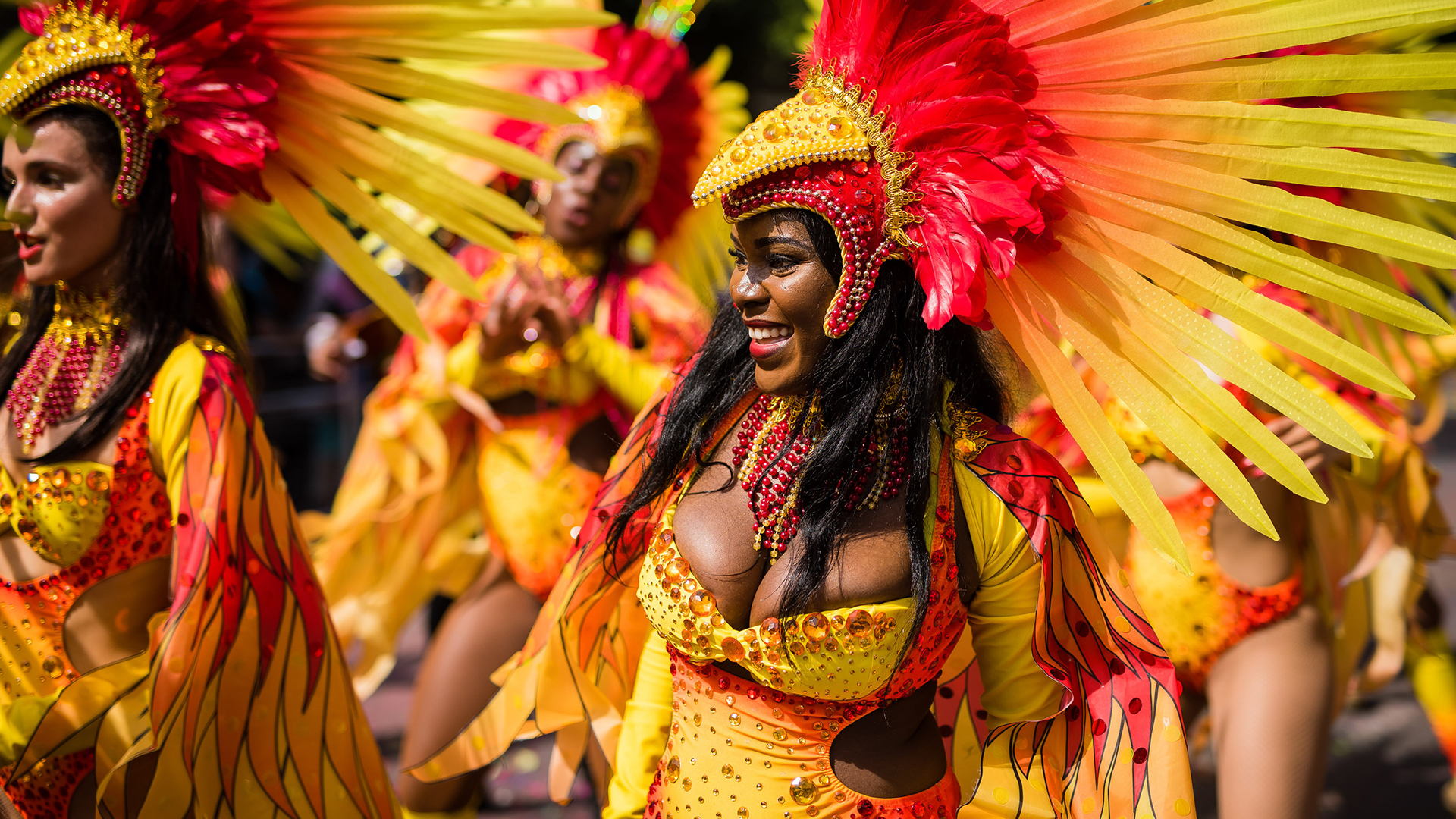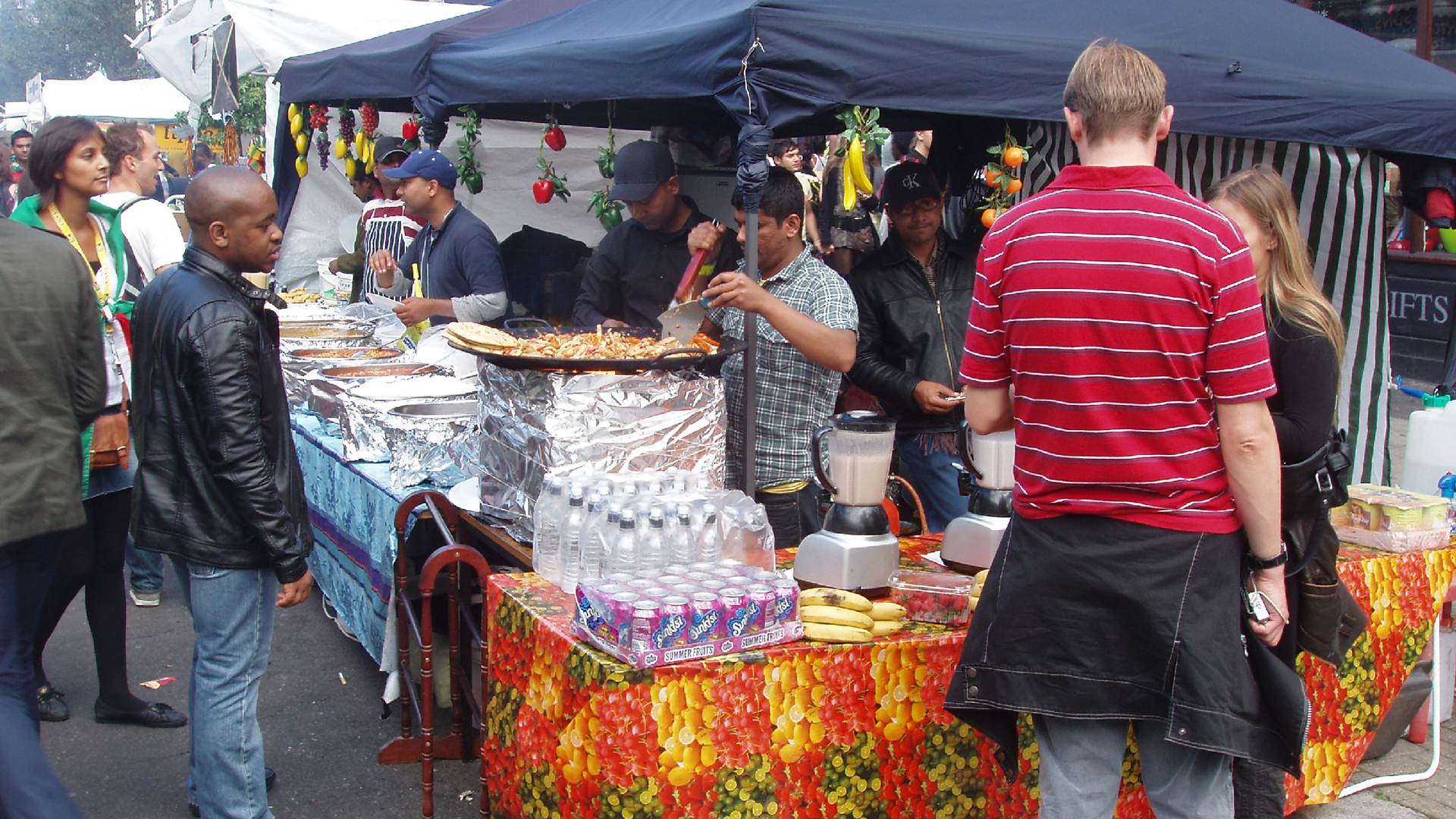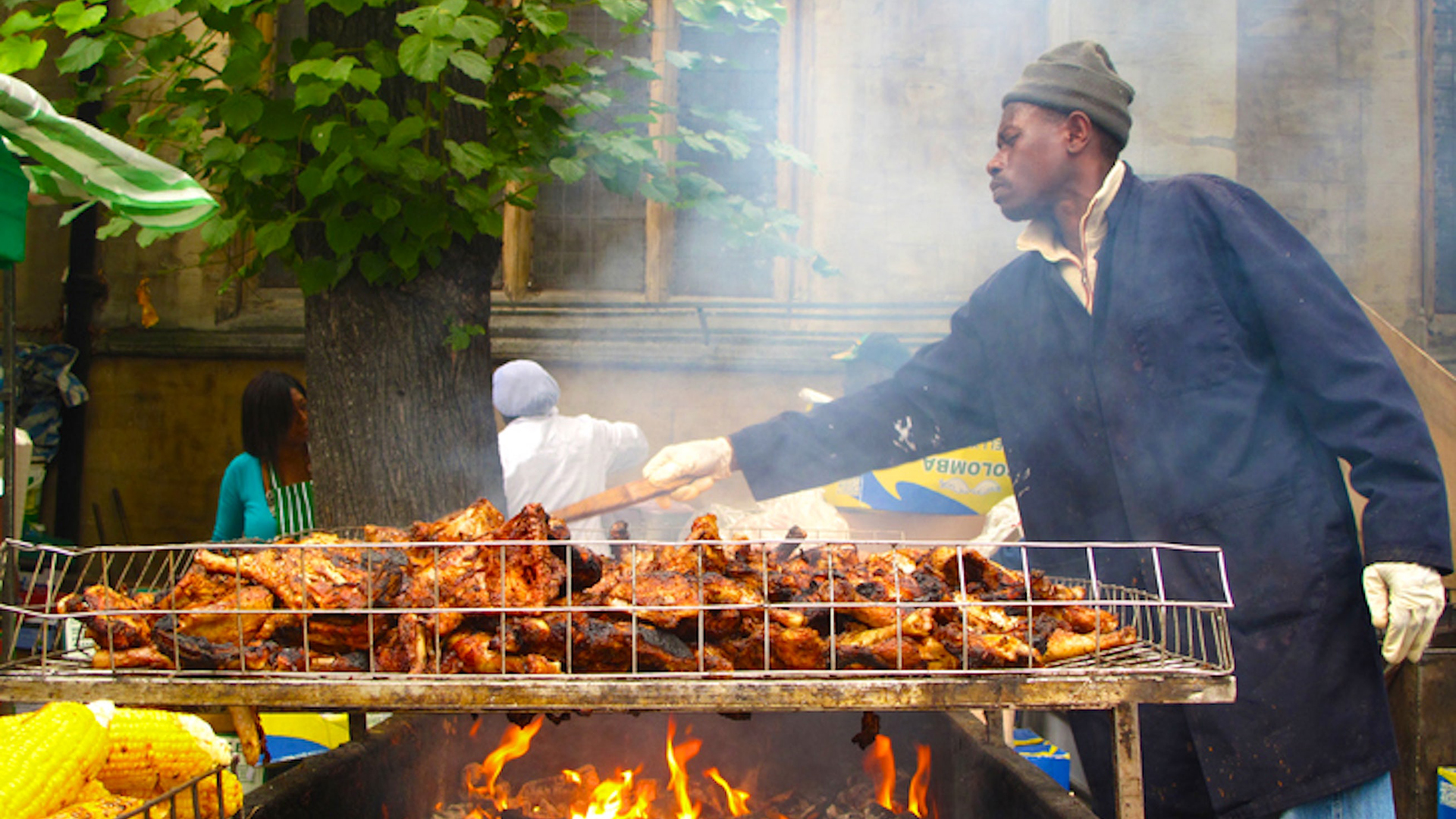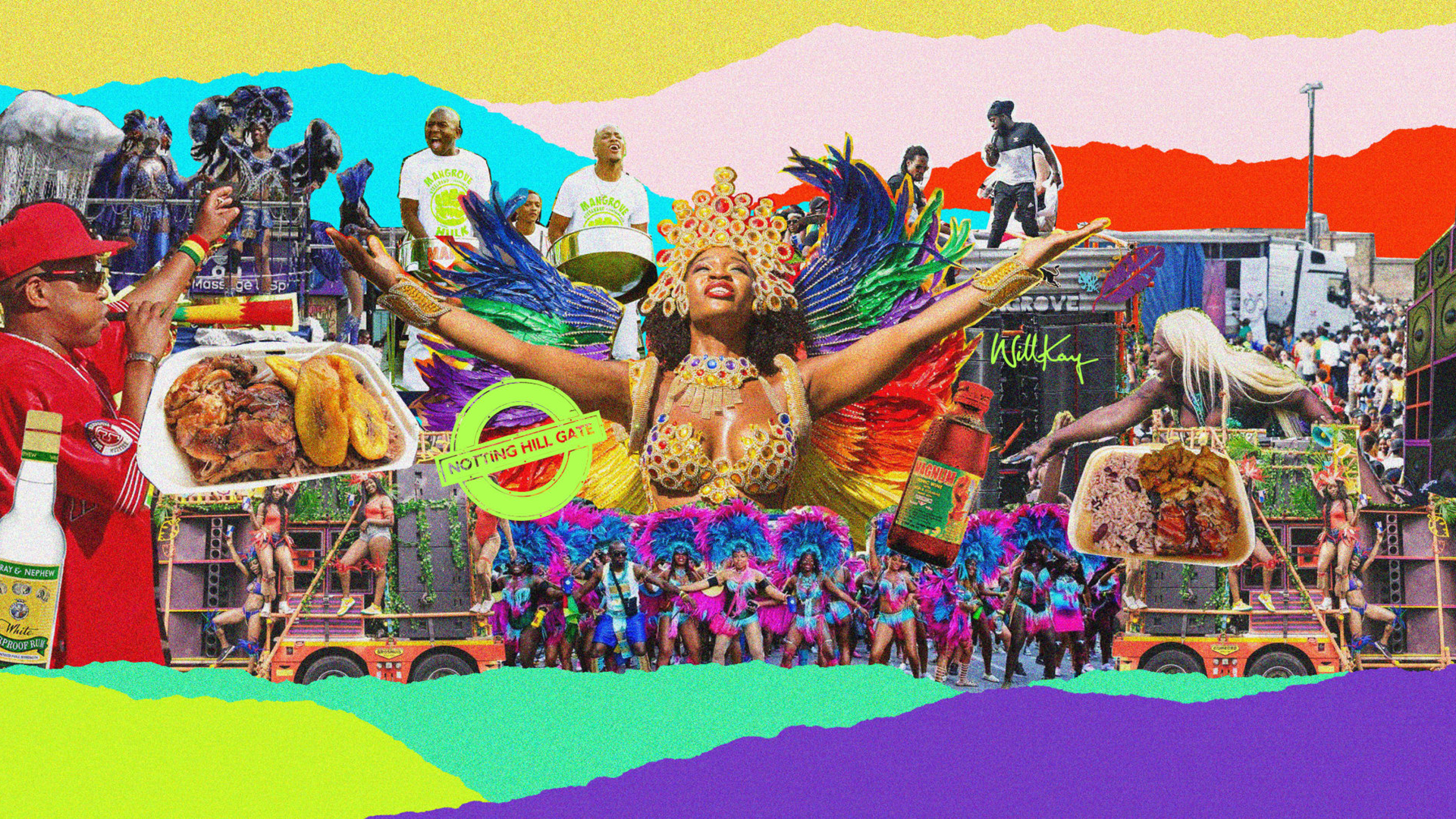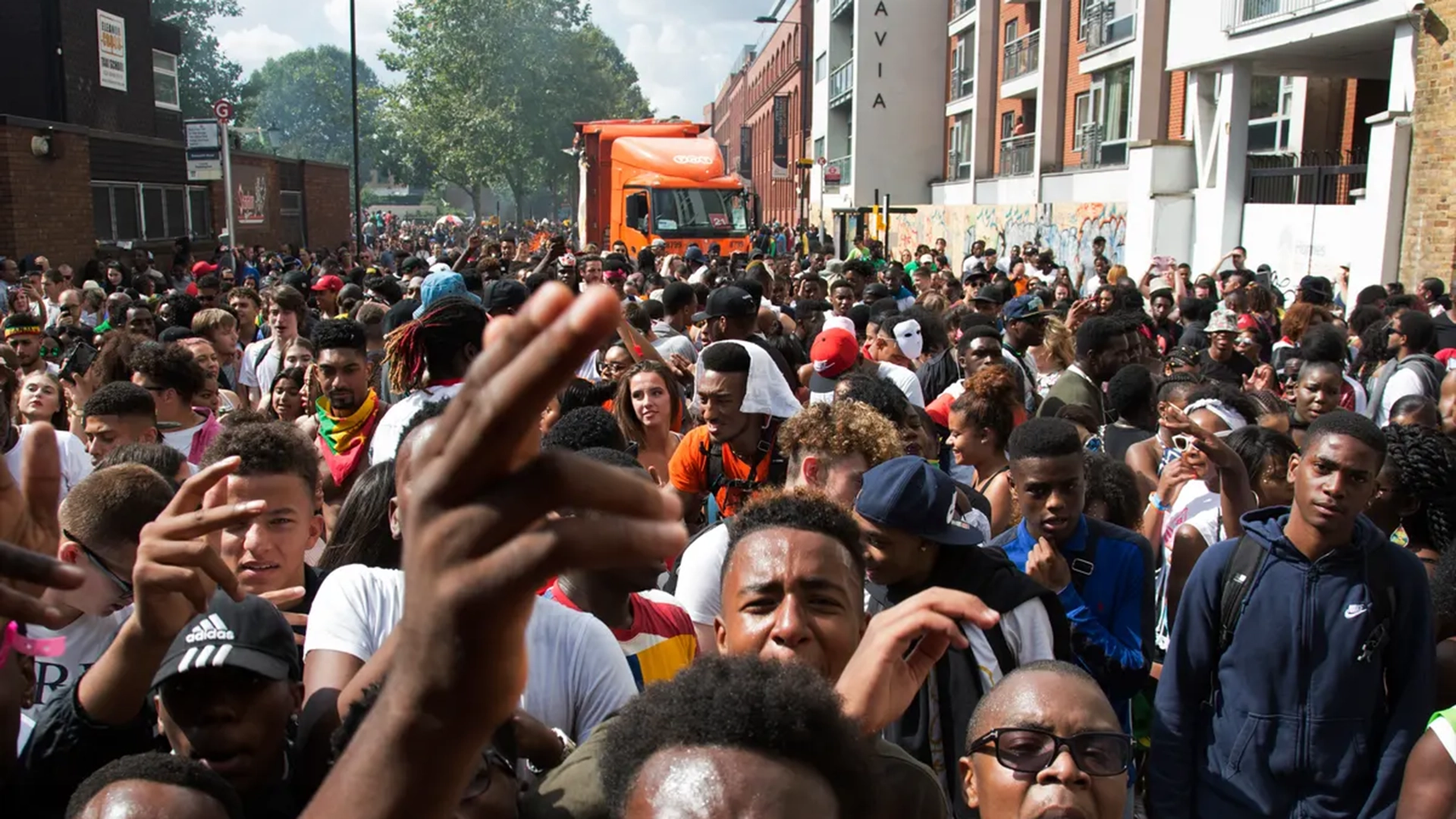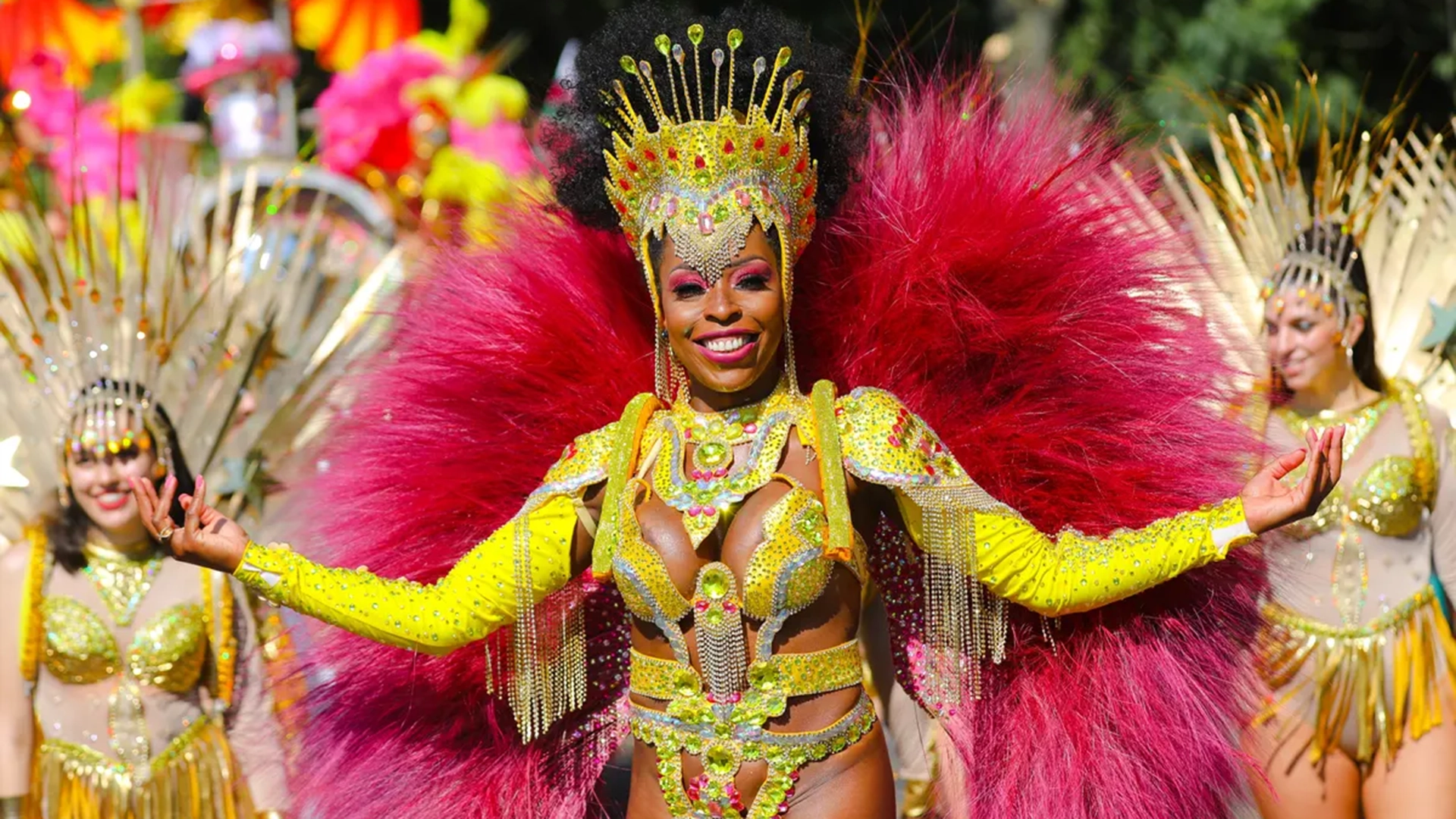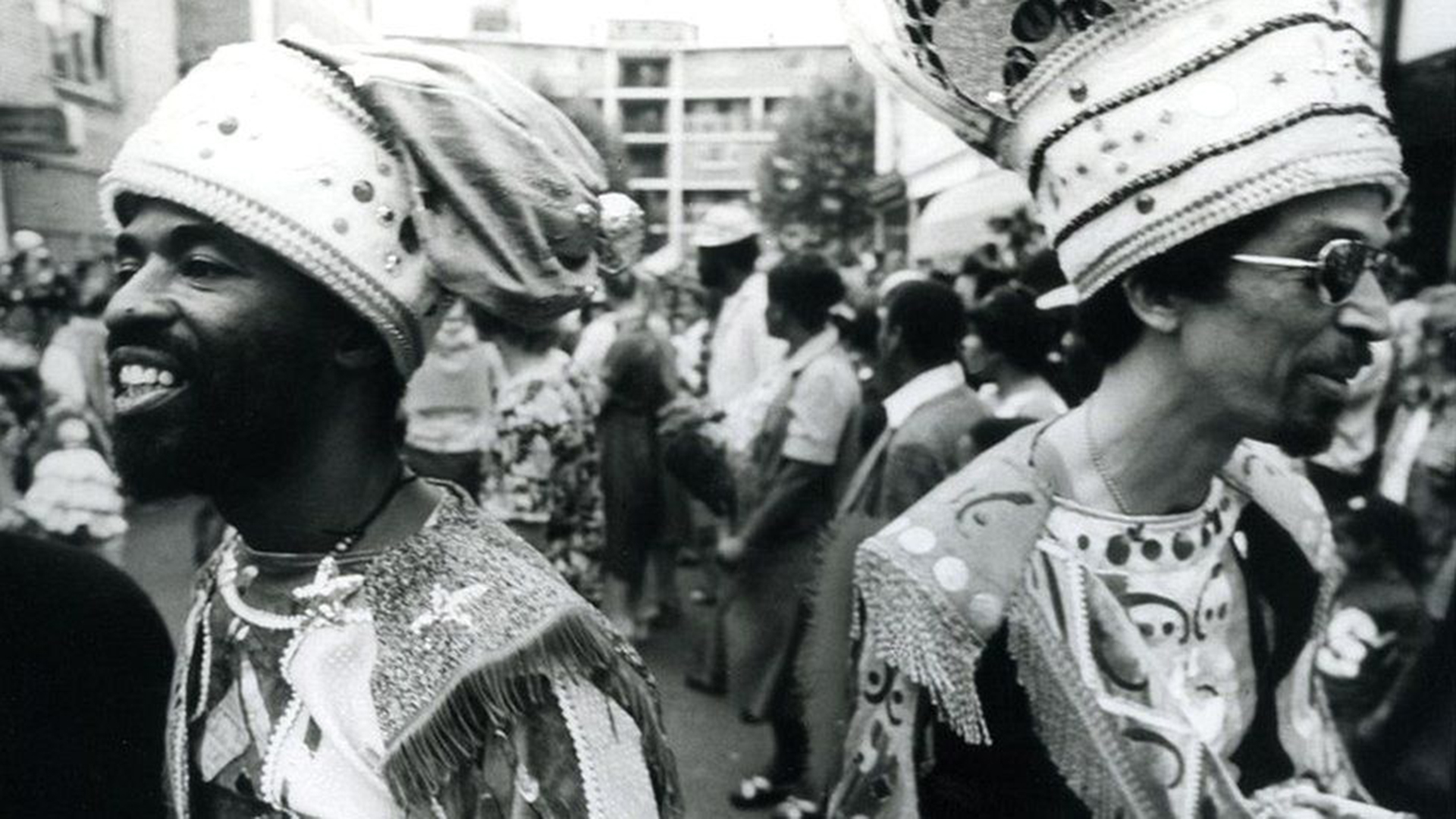Notting Hill Carvival
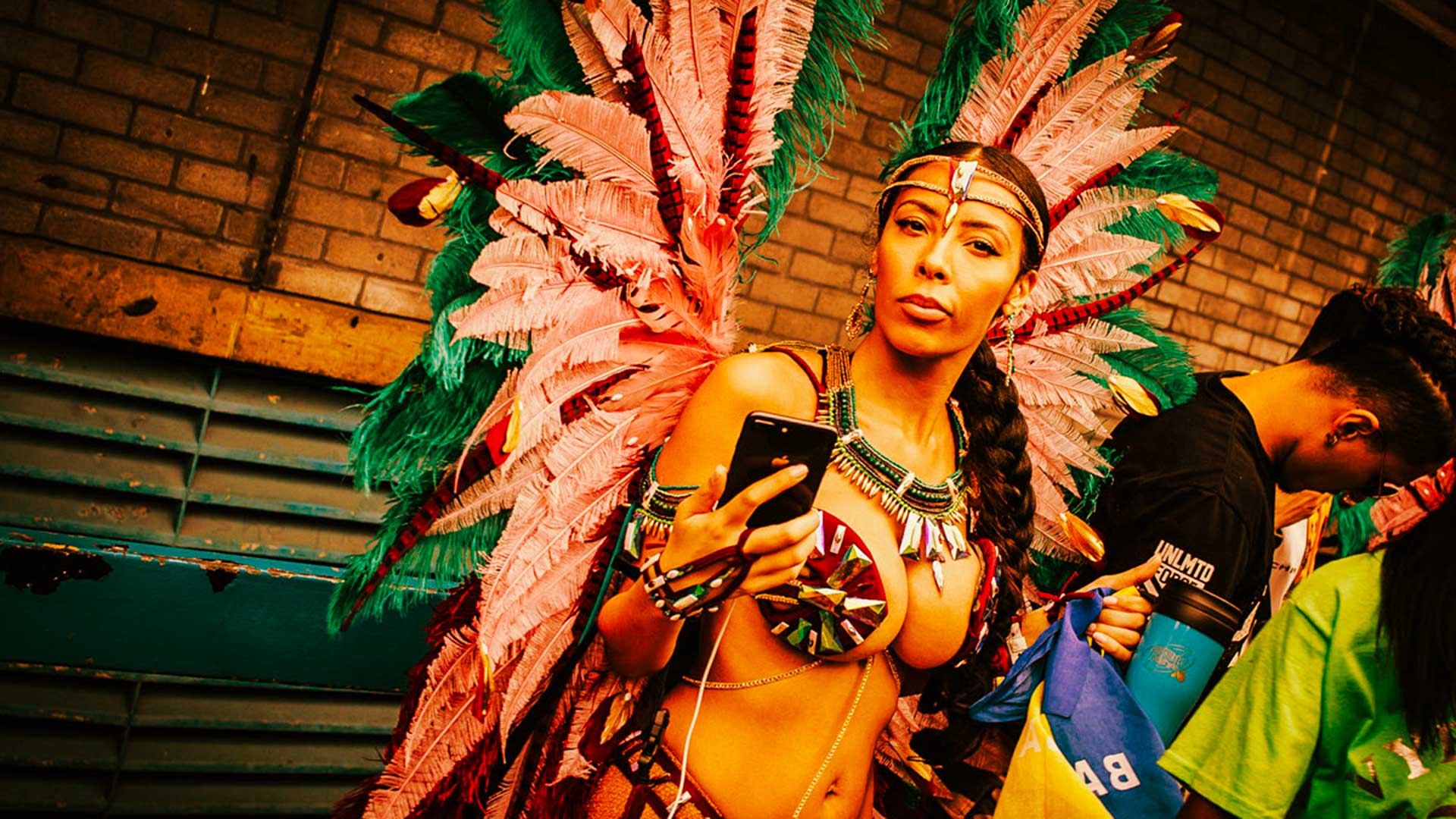
Notting Hill Carvival
Notting Hill Carnival is an event that has been held every year since 1965 in the streets of Notting Hill, London. The event is organized in August and lasts two days: the Monday of the Bank holiday and the Sunday before it.
The origins of mas, from the word ‘masquerade’, go back to the 1800s with the emancipation of slavery in the Caribbean. Prior to their freedom, the slaves would mimic and ridicule the masters, copying the elaborate gowns worn at their celebration balls and combining them with many African traditions of their former cultures – which included costumes made with bones and natural products, and blue devils playing music with tins and bamboo.
Once the slaves were freed from the French, Spanish and English, they would openly continue and elaborate on these foundations, so Caribbean carnival developed as a fusion of African and European traditions and culture. Alongside individual costumes, there are several specific, named characters that became part of this tradition – and which still exist today. Some of the most popular of these are the ‘Dame Lorraine’, who wears long skirts with an exaggerated backside and is accompanied by string music; a ‘Midnight Robber’, who resembles a depiction of Death as he eloquently proclaims his greatness wearing an oversized hat, and often carries skulls, weapons and a coffin for the collection of coins; the ‘Burrokeet’, resembling a satin-clad rider on a donkey constructed as a bamboo skirt, and which has a specific dance; the ‘Pierrot Grenade’, wearing multi-coloured rags and carrying a whip to draw attention to his comedic speeches, whose name denotes his joint roots in the French clown Pierrot and in the island of Grenada; the ‘Fancy Sailor’, an elaborate and decorated sailor with a papier-mâché headpiece and several of his own dances to choose from.
Fast forward a little, and whilst Trinidadians continued to tread the annual Carnival road, many also chose a different and more permanent path and headed for a new life in Britain as part of the Windrush Generation. In 1959, Trinidadian Claudia Jones, a community activist, recognised that something should be done to unite the community in response to the worrying state of race relations. She held her first of several indoor Caribbean Carnivals that year, at St. Pancras Town Hall; a ‘Carnival Cabaret’ featured at the event, which would have been the UK’s first sight of anything resembling Caribbean carnival costumes.
One of the personal accounts of the history of Notting Hill Carnival comes from a secretary who worked with Rhaune Laslett, a social worker and activist in the Ladbroke Grove area. She reported that in the early 60s, Trinidadian women from Tavistock Road, near Ladbroke Grove, went to Rhaune’s office for help. They’d chat, telling her about carnival back home and wishing they could be there to experience it. She thought it sounded like a wonderful celebration, and suggested that they could do something similar in the area. This was the first outdoor, street festival, and it was decided that it should be held in August when children were on holiday from school and could participate fully. Both children and adults paraded through the streets of Ladbroke Grove in costume; children’s costumes were made by the women, with materials sourced from a costume shop on Kensington High Street, and there was a man who ran a taxi firm on all Saints Road who came and played the king.
In the coming years, distinct bands of masqueraders appeared on the road, for example those led by Trinidadian Lawrence Noel, Dominican Silma Faustine, and Trinidadian Peter Minshall, who later became a celebrated costume designer and true icon of the artistry of mas, back home in Trinidad. By the mid 70s, a Carnival Development Committee had been formed to secure funding and develop the carnival. Soon there was more involvement from people from other parts of the Caribbean; costumes were heavily influenced by those countries’ national wear, African dress and historic portrayals, and each band would have a theme.
By 1980, the Arts Council had fully recognised mas as an art form and so, if you were a designer and wanted to bring a costume band on the road, funding was available. There were 10 to 12 mas bands in Carnival by then, but there was still no fixed route – they could go up and down whichever roads they felt like honouring with their presence. There was also a hugely anticipated costume gala held each year, for both adults and children. In the early years the event took place in a huge tent set up in Wormwood Scrubs playing fields. The King, Queen and Individual costumes were paraded through the tent, in at one end and out at the other, whilst everyone scrambled to get ready on the grass outside. The gala later graduated to other venues around London such as the Linford Christie Stadium, the Commonwealth Institute, Alexandra Palace, the Millennium Dome and Olympia.
In 1984, the London School of Samba was the first samba band to perform at the Notting Hill Carnival. Samba music and traditions represent the African / Brazilian carnival culture, which began in Bahia in the eighteen hundreds when African slaves celebrated their freedom due to the abolition of slavery. Today, the Rio carnival features around a hundred samba schools; there are hundreds of samba schools in Brazil, which teach members the art of dance, music and drumming, and this tradition is continued here in London.
Another important element of Caribbean carnival is J’Ouvert, from the French jour ouvert, the opening of the day, and is the official start of the carnival festivities. Revellers spill onto the streets from around 4am, in costumes made from old clothes. This is called ole (‘old’) mas, and presents witty and satirical themes of social commentary. Another feature of J’Ouvert is mud mas, when people get covered in mud, oil, paint or pigmented powder. A modified version of this tradition has existed in the UK on Carnival Sunday since 1996, when a J’Ouvert-style band appeared on the streets of London – not in the early hours, but throughout the day. This has been termed dutty (‘dirty’) mas, and combines some of both the ole mas and mud mas traditions. That first band used liquid chocolate instead of the more indelible substances that feature in the Caribbean; there are now several chocolate, water- based paint and mud bands to choose from on the Sunday – if you’re brave enough to take the plunge. The dutty mas bands also have launch events and websites where you can go to register.
Claire Holder, the longest serving Chair of the Carnival committee from 1989 to 2002, instituted appearance fees and prizes for the mas bands as well as securing significant corporate sponsorship for the carnival as a whole. This was important for the bands, both in terms of recognition of the art form and in giving them opportunities for development.
Another important part of the imported carnival culture was the mas camp, a workshop (often someone’s front room) used by a band to design and produce their costumes in-house, but which doubled as a place to socialise whilst helping to make costumes. There was always food, drink and music in a mas camp.
There has been a progression, partially influenced by samba costumes from Brazil, towards increasingly skimpier costumes in a style often referred to as ‘bikini and beads’, where the emphasis is more on aesthetics than a narrative or depiction of a theme. But running alongside this there are those who are harking back to more traditional mas, even still representing some of those traditional figures. Other designers are developing their own contemporary take on the traditional ethos, redefining mas in the modern age. The range and variety of the costume bands has considerably influenced the development of the Notting Hill Carnival as one of Europe’s most significant cultural events.
All of the variations and more are to be found amongst the 70 plus bands on the road at Notting Hill Carnival Monday. Many bands have now outsourced their costume-making, either overseas or elsewhere in the UK, but there are still a handful of more traditional mas camps around. Whether you’d like to make costumes or just wear one on the road, you need to do some research and see what’s out there.
Most bands hold a launch event at some point between April and July, where they show their costumes and often allow preliminary registration. You don’t need to attend, but it’s a great opportunity to go and see the costumes in person – and get a taste of the music and party atmosphere at the same time. It’s possible to view and register for costumes afterwards, online. There’s a price range for each band, with some more expensive than others depending on the costume you opt for and the extras you choose. Most are all-inclusive, so as well as your costume you’ll be provided with food and drink, music and security throughout the day.
Each band has their own system in place regarding when and from where costumes should be collected, where and when you should meet them on the day, and what happens during the day. It’s good to be aware that a highlight is when the band reaches the judging point, and gets the opportunity to display the costumes, section by section, in all their glory. These things are important, so make sure you check everything in advance.
As the August Bank Holiday approaches, the realisation grows that you’re about to participate in a significant aspect of Caribbean culture and anticipation mounts. And when you’ve thought through the accessories you’ll want to properly portray your costume and the essentials you’ll need to make it through the day, we challenge you to not feel the excitement!
